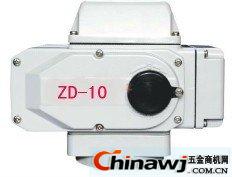Types of Ball Valves
Medium and large ball valves are categorized into several types, including floating ball valves, fixed ball valves, track ball valves, V-shaped ball valves, three-way ball valves, stainless steel ball valves, forged steel ball valves, unloading ball valves, electric ball valves, pneumatic ball valves, ferrule ball valves, welded ball valves, flanged ball valves, and threaded ball valves.
For floating ball valves, the ball is designed to float. When subjected to medium pressure, the ball can displace slightly and press against the outlet sealing surface, ensuring effective sealing. These valves have a simple design and provide excellent sealing performance. However, the entire load from the working medium is transferred to the outlet sealing ring. This means the material of the sealing ring must be capable of withstanding the pressure exerted by the medium. Additionally, under high-pressure shocks, the ball might become misaligned. Due to these considerations, floating ball valves are typically used in medium and low-pressure applications.
In contrast, the ball in a fixed ball valve remains stationary once pressed. Fixed ball valves feature a floating seat that moves under medium pressure, pressing the sealing ring against the ball to ensure proper sealing. The ball is usually mounted on upper and lower shafts, reducing the operating torque. This makes fixed ball valves ideal for high-pressure and large-diameter applications. To further decrease the operating torque and enhance sealing reliability, some modern fixed ball valves incorporate an oil-sealed design. Special lubricating oil is injected between the sealing surfaces to create an oil film, improving sealing efficiency and reducing torque. This type of valve is particularly well-suited for high-pressure and large-diameter scenarios.
The elastic ball valve features an elastic ball, where both the ball and the seat are made of metallic materials. The sealing pressure required is quite significant, as the medium's pressure alone cannot achieve adequate sealing. An external force is needed for this purpose. Elastic ball valves are ideal for handling high-temperature and high-pressure media. The elasticity of the ball is achieved by cutting an elastic groove inside the ball. When closing the valve, the wedge of the valve stem presses the ball against the seat to seal. Before rotating the ball, the wedge is loosened, creating a slight gap between the ball and the seat. This helps reduce friction and the torque required for operation.
 Additional Notes: While each type of ball valve has its unique characteristics and applications, selecting the right one depends on specific operational conditions such as pressure, temperature, and medium properties. Proper maintenance and regular inspections are crucial to ensure long-term reliability and optimal performance of ball valves.
Additional Notes: While each type of ball valve has its unique characteristics and applications, selecting the right one depends on specific operational conditions such as pressure, temperature, and medium properties. Proper maintenance and regular inspections are crucial to ensure long-term reliability and optimal performance of ball valves.Shower Accessories,Bathroom Set Accessories,Shower Accessories Set,Shower Accessories Elbow
Kaiping Rainparty Sanitary Ware Technology Co.,Ltd. , https://www.rpshower.com